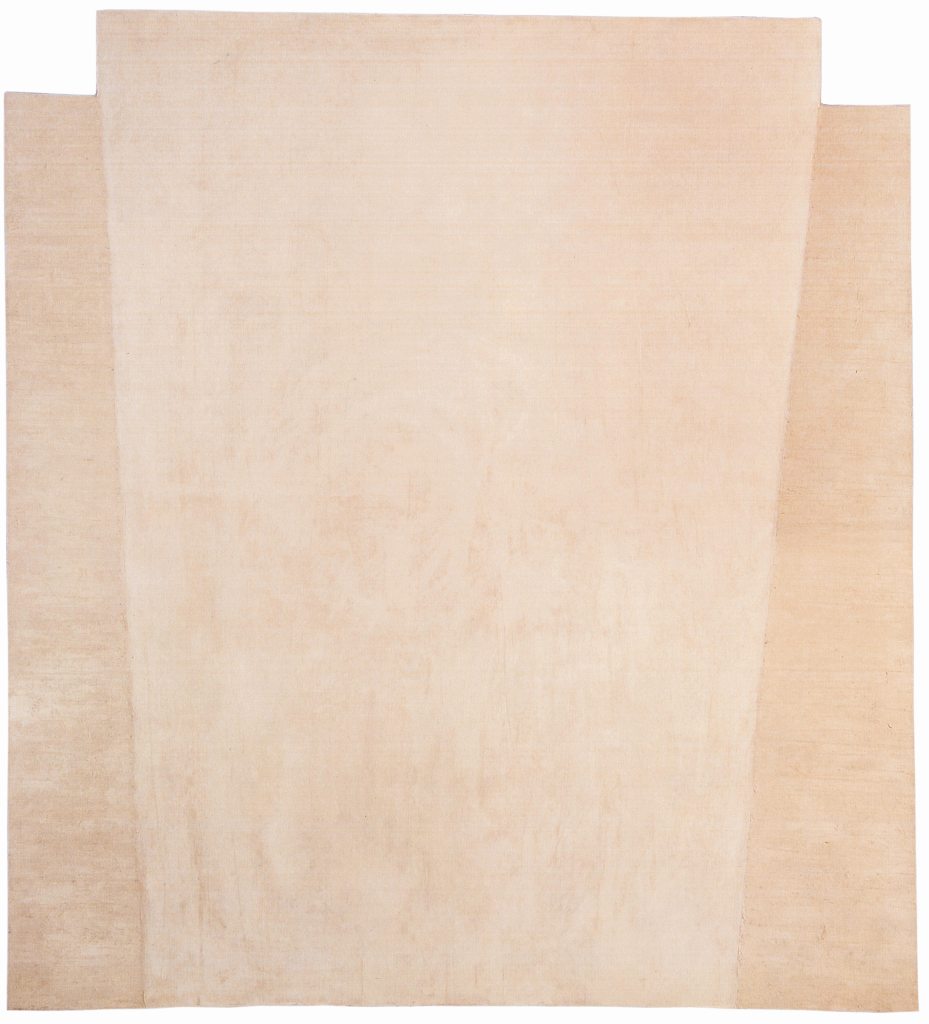GIANFRANCO ANASTASIO
Gianfranco Anastasio nasce a Messina nel 1956. Si laurea in architettura nel 1985.Il suo lavoro coniuga sentimento della materia ed analisi dello spazio, in una prassi pittorica che è insieme conoscitiva ed operativa: ogni opera rende visibili altri aspetti della realtà. L’artista mira al recupero delle qualità intrinseche del dipinto, a stabilirne la funzione costruttiva piuttosto che descrittiva.Sua figura poetica ricorrente è la soglia intesa come metamorfosi, confluenza, attraversamento, luogo e tempo in cui le tensioni dialettiche si possono percepire nella loro coincidenza e distinzione.
 GLI OCCHI PER VEDERE
GLI OCCHI PER VEDERE
1989 - olio su tela, cm 167x150
L’opera è il risultato di una “Nuova Pittura”, concentrata sulla materialità del colore e della tela, frutto di una tendenza “autoriflessiva” che si afferma alla fine degli anni ’70 come evoluzione dell’Astrattismo. L’opera fa parte della serie “Come le pietre” caratterizzata dall’uso del bianco in tutte le sue sfumature. L’autore sperimenta anche supporti sagomati che propongono un inedito rapporto con la superficie altra del muro.
Scheda Catalogo
 Gianfranco Anastasio was born in Messina in 1956. He takes a degree in architecture in 1985. His work combines the feeling of matter and space analysis, in a pictorial practice that is both cognitive and operational: each work makes visible other aspects of reality. The artist seeks the recovery of the intrinsic qualities of the painting, to determine its function as constructive rather than descriptive. His recurrent poetic figure is the threshold as metamorphosis, confluence, crossing, place and time in which the dialectial tensions can be perceived in their coincidence and distinction.It’s an oil on canvas.
Gianfranco Anastasio was born in Messina in 1956. He takes a degree in architecture in 1985. His work combines the feeling of matter and space analysis, in a pictorial practice that is both cognitive and operational: each work makes visible other aspects of reality. The artist seeks the recovery of the intrinsic qualities of the painting, to determine its function as constructive rather than descriptive. His recurrent poetic figure is the threshold as metamorphosis, confluence, crossing, place and time in which the dialectial tensions can be perceived in their coincidence and distinction.It’s an oil on canvas.
EYES TO SEE - 1989 - is an oil on canvas - The work is the result of a “New Painting” focused on the materiality of color and canvas, the result of a self-reflexive tendency that is stated at the end of the seventies as the evolution of abstract art. The work is part of the series “How stones” characterized by the use of white in all its shades. The author also experiences shaped supports offering an unprecedented relationship with the other surface of the wall.